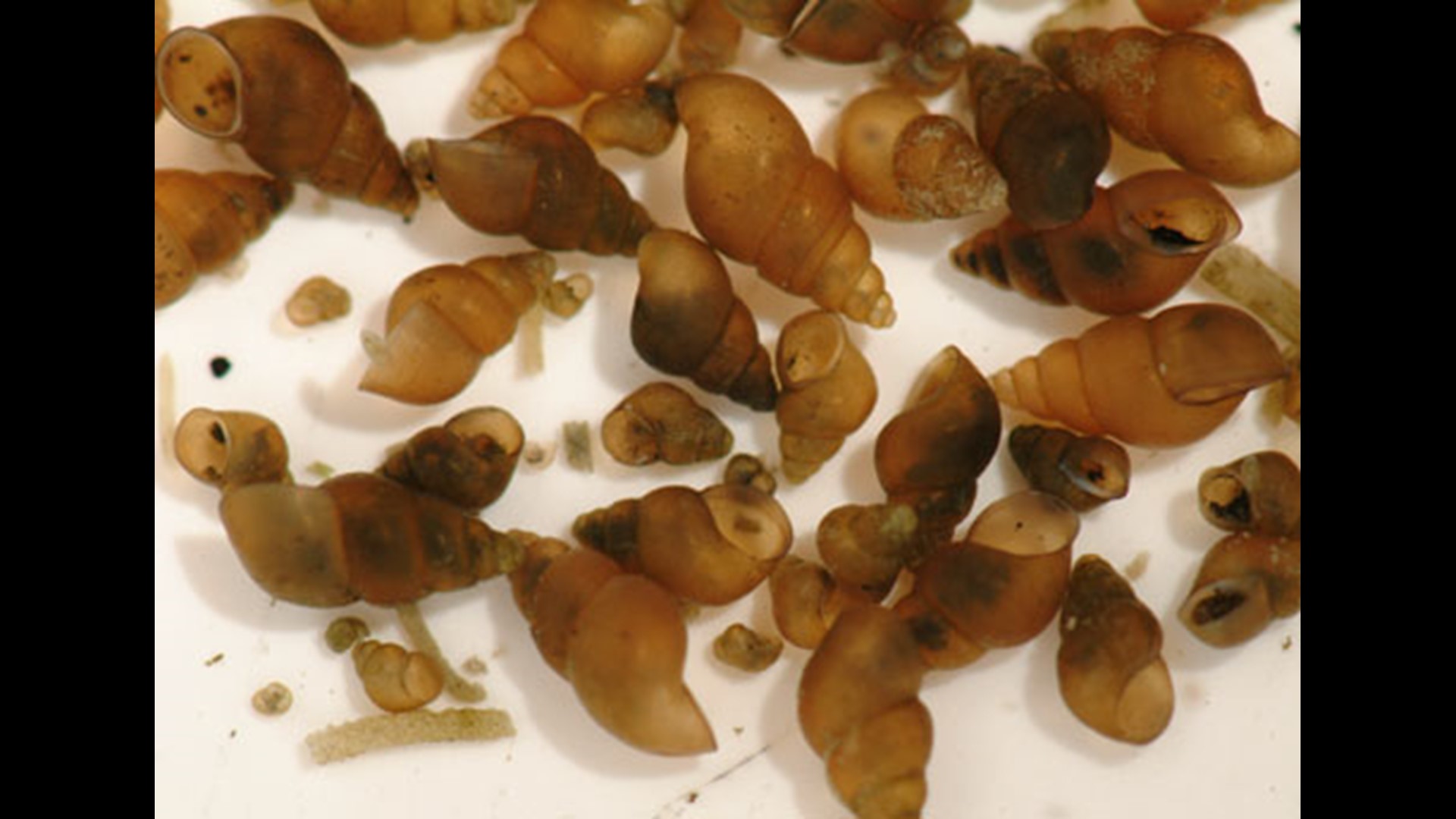Skagit County urged the public to report invasive species Tuesday after invasive snails were found near Padilla Bay.
Wildlife officials say New Zealand mudsnails were first seen in Indian Slough, which is north of Whitney, in September by the Washington State Department of Agriculture.
New Zealand mudsnails are about 1/8 inches long and cone-shaped.
This type of mudsnail self-produces rapidly, feeding on algae that’s important to aquatic insects, which is a food source for juvenile native salmon. However, salmon can’t eat the snails instead of insects, because the snails have low nutritional value, according to WDFW.
There are also no known predators to mudsnails in Washington that can keep the population down.
New Zealand mudsnails were first found in Washington state in 1996 in the Lower Columbia River estuary. The species have since been discovered in several other locations, including Lake Washington, the Chehalis River, and Capitol Lake in Olympia. Most recently the snails were detected in Redmond in March, according to a WDFW map that tracks mudsnails.
You can help prevent their spread by cleaning, draining, and drying equipment after it comes into contact with Washington waters. You can also decontaminate gear by soaking it in hot water or freezing it for 24 hours at temperatures down to 15 degrees.
On Saturday, the state also plans to open a decontamination station in Ephrata, where boats can get decontaminated from invasive aquatic species for free.
If you see a New Zealand mudsnail, report it to WDFW and the Washington Invasive Species Council so the agencies can monitor trends of invasive aquatic species.

